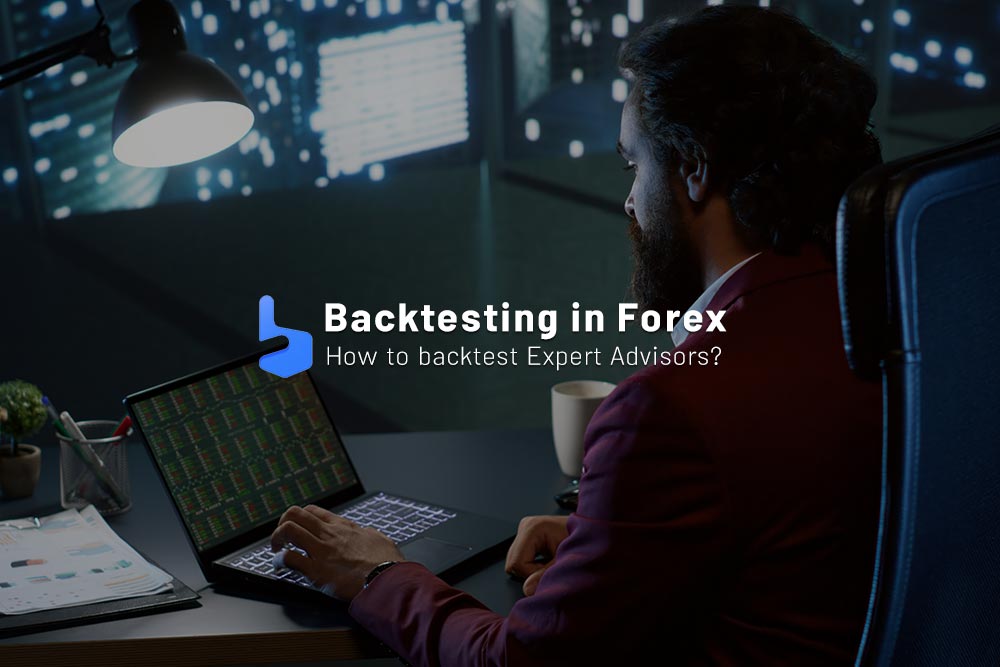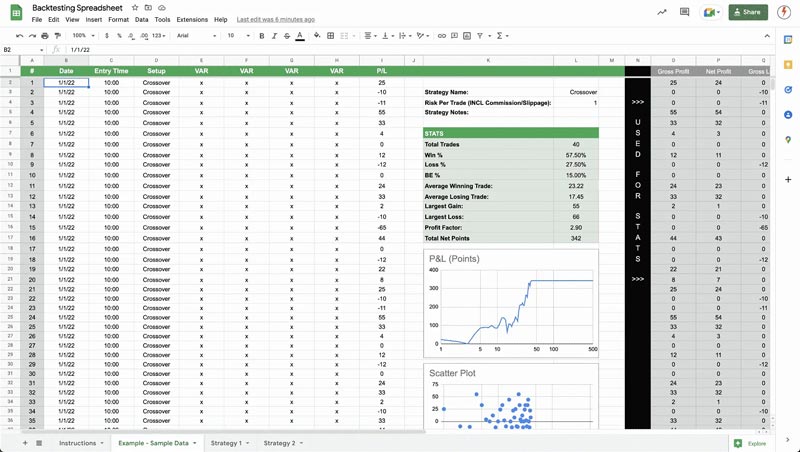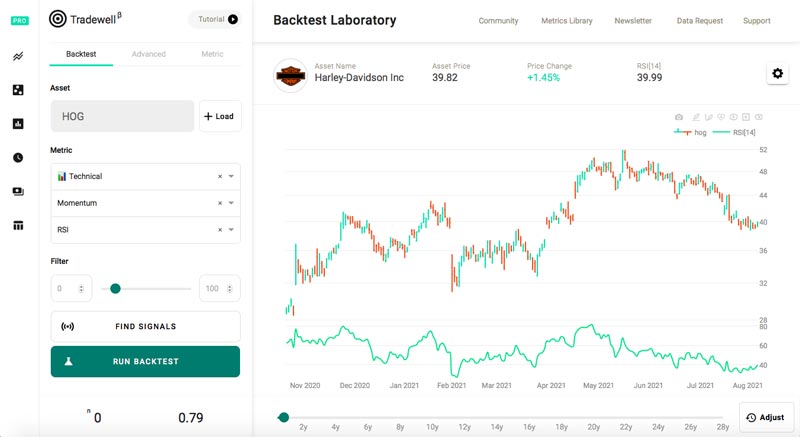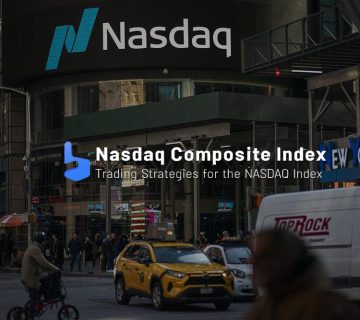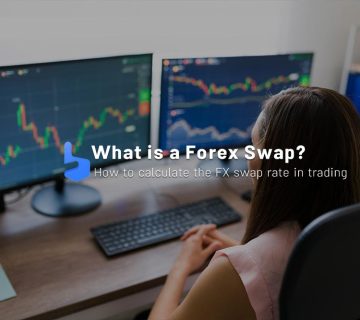What you are about to read:
In the constantly evolving world of forex trading, success often depends on the ability to make informed decisions based on past data and market insights. Amidst the complexities of financial markets, backtesting emerges as a powerful tool for traders seeking to refine their strategies, manage risks, and ultimately enhance their profitability.
By simulating trading strategies against historical market data, backtesting provides valuable insights into the performance and sustainability of trading approaches to traders. In this article from BrokerLand, we delve into the intricacies of how to backtest Expert Advisor in forex trading, exploring its significance, advantages, and how traders can effectively utilize this tool to optimize their trading strategies and navigate the dynamic landscape of currency markets.
What is Backtesting?
Backtesting is a process used across various fields, particularly in finance and trading, to evaluate the performance of a trading strategy or investment model using historical data. This process involves applying a set of trading rules or criteria to past market data to simulate the performance of a strategy under those past conditions.
The primary goal to backtest expert advisors is to assess the sustainability and effectiveness of a trading strategy by analyzing performance metrics such as profitability, risk-adjusted returns, win rates, maximum drawdown, and other relevant indicators. Traders and investors can gain valuable insights into the strengths and weaknesses of their strategies, identify potential risks, and make informed decisions about deploying them in live trading environments.
Essentially, backtesting serves as a tool for validating trading strategies and allows traders to evaluate the robustness and reliability of their trading systems before risking real capital in financial markets. This helps traders refine and optimize their strategies, improve risk management practices, and ultimately increase the likelihood of achieving consistent profits over time.
How to Backtest Expert Advisor
Backtest Expert Advisor typically involves the following stages:
- Data Selection: Traders select historical data relevant to the assets or markets they trade. This data usually includes price information (such as open, high, low, close prices), volume, and other relevant indicators.
- Strategy Development: Traders define a set of trading rules, entry and exit criteria, risk management parameters, and other relevant factors that form the basis of their trading strategy.
- Simulation: Traders apply the defined trading rules to the selected data to simulate trading under specified timeframes. Entry and exit points for each trade, position sizes, and other relevant details are recorded.
- Performance Analysis: After completing the simulation, traders analyze the results to evaluate the performance of the strategy. They assess key metrics such as profitability, drawdown, Sharpe ratio, win rate, and others to evaluate the effectiveness and suitability of the strategy for live trading.
- Optimization and Iteration: Based on insights gained from the backtesting process, traders may adjust their trading strategies by fine-tuning parameters, adding new rules, or removing ineffective elements. This iterative process continues until satisfactory results are achieved.
It’s important to note that while backtesting provides valuable insights into the performance of a strategy, it does not guarantee future success. Market conditions and forex news are constantly changing, and past performance may not necessarily reflect future results. Therefore, traders should use it in conjunction with other forms of analysis and risk management techniques for informed decision-making in their trades.
Generally, backtesting is a vital part of developing trading strategies that enables traders to evaluate and refine their strategies with the aim of achieving consistent profitability in financial markets.
What are the Benefits and Importance of Backtesting?
It offers several advantages and holds significant importance for traders and investors in various financial markets. Here are some key benefits and reasons why this practice is essential and highly important:
Performance Evaluation: Backtesting allows traders to objectively evaluate the historical performance of their trading strategies. By analyzing metrics such as profitability, risk-adjusted returns, win rate, and maximum drawdown, traders can gain insights into how well their strategies have performed under past market conditions.
Risk Management: It helps traders identify potential risks associated with their trading strategies. By analyzing historical drawdowns and fluctuations, traders can assess the level of risk of their strategies and adjust risk management parameters accordingly to mitigate potential losses.
Strategy Validation: Backtesting serves as a tool for validating trading strategies before deploying them in live trading environments. By simulating trades based on historical data, traders can assess the robustness and reliability of their strategies and ensure they are based on sound principles with a high probability of success.
Optimization: It enables traders to optimize their trading strategies by fine-tuning parameters, adjusting entry and exit criteria, or incorporating new rules based on insights from past performance. This iterative process allows traders to improve the profitability and efficiency of their strategies over time.
Confidence Building: Successful backtesting results can boost traders’ confidence in their strategies and decision-making processes. By demonstrating a strategy’s ability to generate profits in historical market conditions, it instills the belief in traders to execute trades with discipline and conviction.
Learning and Education: Backtesting provides valuable learning opportunities for traders to understand market dynamics, experiment with new ideas, and gain practical experience in developing and executing strategies. Like a trading journal, it allows traders to learn from past mistakes, improve their skills, and enhance their trading journey.
Market Adaptation: It helps traders adapt their strategies to changing market conditions by analyzing their performance across different market cycles. By understanding the strengths and weaknesses of their strategies in various market phases, traders can make informed adjustments to optimize performance.
Time Efficiency: Backtesting allows traders to efficiently evaluate multiple trading strategies or variations thereof. Instead of relying on trial and error in live trading, traders can use historical data to quickly test different ideas and iterate on them to find the most effective approaches.
How to Perform Backtesting in Forex
Expert Advisor (EA) backtest in forex involves simulating the performance of forex expert advisors using historical market data. Most trading platforms, especially those designed for forex trading, offer built-in backtesting capabilities that allow traders to test their EAs against historical data. Here is a step-by-step guide on how to backtest expert advisor in forex:
- Choose a trading platform: Select a trading platform that supports expert backtesting. Popular platforms like MetaTrader 4 and MetaTrader 5 are widely used by Forex traders and offer robust capabilities.
- Install the expert: If you haven’t done this before, install the EA you want to backtest on your trading platform. EAs are usually coded in MetaQuotes language (MQL) for MT4 and MT5 platforms. You can either write your own EA or download from a reputable source.
- Access the strategy tester: Most trading platforms have an internal strategy tester tool specifically designed for these purposes. In MetaTrader platforms, you can access the strategy tester by clicking on the “View” menu and selecting “Strategy Tester” or by pressing Ctrl + R.
- Select the expert and parameters: In the Strategy Tester window, select the EA you want to backtest. Adjust the parameters to backtest expert advisor, including currency pairs, time frames, initial deposit, leverage, and any other relevant settings.
- Choose historical data: Select the range of historical data to backtest expert advisor. You can specify the start and end dates or choose from predefined periods. Make sure the historical data reflects market conditions in which you intend to trade.
- Set test mode and model: Choose the test mode (e.g., “Every Tick” for the most accurate results or “Open Prices Only” for faster testing) and modeling quality (e.g., “Tick” for more precise results based on tick data).
- Start the backtest: After configuring all settings, click the “Start” button to start to backtest expert advisor. The platform simulates the performance of the EA based on the selected historical data and parameters.
- Monitor results: During the Forex backtesting, monitor the results in real-time, including equity curve, profit and loss (P&L), drawdown, and other relevant metrics. Pay attention to how the EA performs in different market conditions and whether it meets your performance criteria.
- Analyze results: After completing the backtest, analyze the results to evaluate the performance of the EA. Key metrics such as profitability, drawdown, win rate, risk-adjusted return, and others should be assessed to determine the effectiveness of the strategy.
- Optimize and refine: Based on the backtest results, optimize and refine the EA by adjusting parameters, modifying trading rules, or incorporating additional filters to improve performance.
- Repeat: To confirm the effectiveness of the EA in various market conditions, perform multiple backtests with different settings and parameter changes. Ensure that the strategy is consistently reliable over time.
By following these steps, you can effectively test an expert in Forex and gain valuable insights into its performance before using it in live trading. Remember that it is just one step in the strategy development process and should be complemented with forward testing, risk management, and continuous optimization for long-term success.
Summary
Forex backtesting serves as the foundation for developing Forex trading strategies and provides traders with a systematic, data-driven approach to evaluating the performance and sustainability of their trading approaches. By using historical market data, traders can gain valuable insights into the strengths and weaknesses of their strategies, identify potential risks, and refine their trading approaches to improve profitability and stability.
While this alone does not guarantee success in financial markets, it serves as an important step in becoming a successful trader. By integrating backtesting into their trading processes and adopting a systematic and iterative approach to strategy development, traders can increase their chances of achieving long-term success in the dynamic and competitive world of Forex trading.

